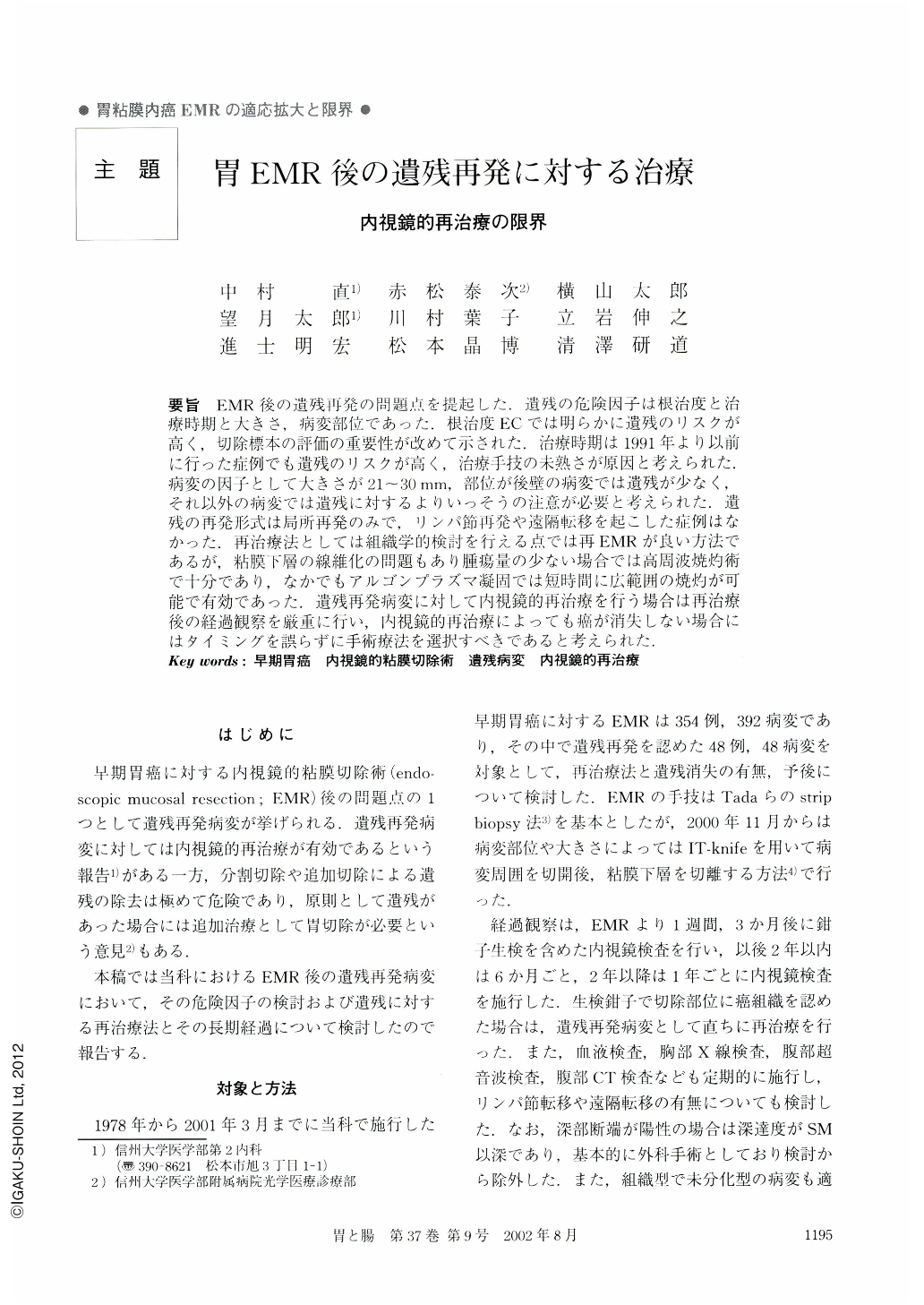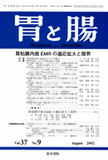Japanese
English
- 有料閲覧
- Abstract 文献概要
- 1ページ目 Look Inside
要旨 EMR後の遺残再発の問題点を提起した.遺残の危険因子は根治度と治療時期と大きさ,病変部位であった.根治度ECでは明らかに遺残のリスクが高く,切除標本の評価の重要性が改めて示された.治療時期は1991年より以前に行った症例でも遺残のリスクが高く,治療手技の未熟さが原因と考えられた.病変の因子として大きさが21~30mm,部位が後壁の病変では遺残が少なく,それ以外の病変では遺残に対するよりいっそうの注意が必要と考えられた.遺残の再発形式は局所再発のみで,リンパ節再発や遠隔転移を起こした症例はなかった.再治療法としては組織学的検討を行える点では再EMRが良い方法であるが,粘膜下層の線維化の問題もあり腫瘍量の少ない場合では高周波焼灼術で十分であり,なかでもアルゴンプラズマ凝固では短時間に広範囲の焼灼が可能で有効であった.遺残再発病変に対して内視鏡的再治療を行う場合は再治療後の経過観察を厳重に行い,内視鏡的再治療によっても癌が消失しない場合にはタイミングを誤らずに手術療法を選択すべきであると考えられた.
We considered the problem of re-treatment using post endoscopic mucosal resection (EMR) for remnant lesions. The risk factors concerning post EMR remnant lesions are curability, period of treatment, size, and the circumferetial site. Histological evaluation is very important for discerning the curability of EMR specimens. A pattern of only local recurrence with no metastasis to regional lymph nodes and distant organs must be ascertained. Re-EMR and high frequency cauterizations are very useful for endoscopic re-treatments of post EMR remnant lesions. In case of endoscopic re-treatment, strict follow-up is very important, and if remnant lesions are not cured, surgical treatment should be recommended without hesitation.

Copyright © 2002, Igaku-Shoin Ltd. All rights reserved.


